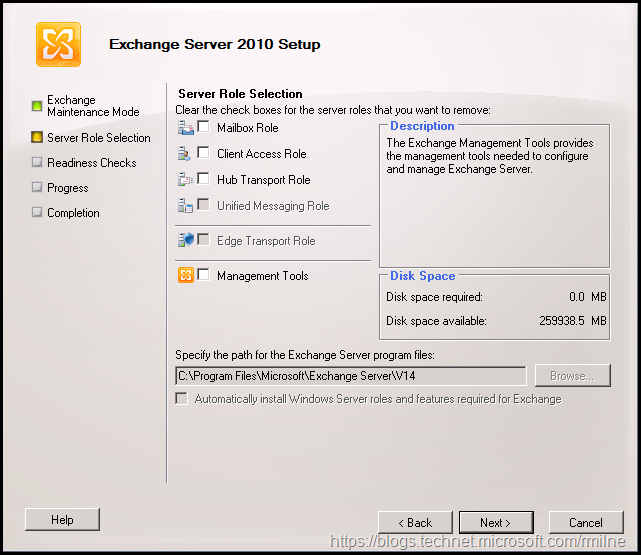
Let’s briefly look at some of the key changes in 2016 that were not available in the 2010 version. So, what’s new in Exchange 2016 that makes it so exciting for system administrators world over? If you haven’t done it already, it’s probably time to consider migrating your mail server from Exchange 2010 to 2016 because it is more convenient and lays the foundation for future progress. You have to configure Edge rules in this server to control and monitor send and receive email from un-trusted network.Microsoft Exchange 2016 is exciting as it comes with a host of cool features such as cloud deployments, improved reliability, and a new architecture that is much more conducive for today’s business environment. Edge transport server also facilitate content filtering such as Antivirus/ Anti-spam functionality in and out of exchange organisation. You have to configure Send connectors and Receive connectors on the Edge Transport server to control message processing. The Edge Transport server role acts as a smart host and SMTP relay for the Exchange organization. The Edge Transport server role accepts mail coming into the Exchange 2010 organization from the Internet/ un-trusted networks and routes all outbound messages to the Internet. You may deploy two HT server in your organisation to obtain redundancy and load balancing.Įdge Transport Server This is the mail routing server that typically sits at the perimeter/DMZ of the network and routes mail in to and out of the Exchange organization. you can setup custom rules in hub transport server to record entire email communication to and form your organisation. It handles mail flow, categorize, routing and delivery. The Microsoft Exchange Server 2007 Hub Transport server role is deployed inside your organization’s Active Directory directory service. Hub Transport Server This is the mail routing server that routes mail within the Exchange organization i.e. Microsoft Exchange 2010 provides access to Exchange information, voice mail, Call answering and outlook voice access. After Unified Messaging servers have been deployed on the network, users can access their messages using Outlook Voice Access, from any telephone, from a mobile phone, or from the computer. Unified Messaging puts all e-mail and voice messages into one Exchange 2010 mailbox that can be accessed from many different devices. Microsoft Exchange Server 2010 Unified Messaging (UM) combines voice messaging, and e-mail messaging into a single messaging infrastructure.



Unified Messaging Server This is the server that connects a Private Branch PBX system to Exchange 2010. The Client Access Server also hosts Web services (internet facing webmail). Mailbox server interact with rest of the servers holding the following roles and also with Microsoft Active Directory.Ĭlient Access Server This is the server that hosts the client protocols, such as Post Office Protocol 3 (POP3), Internet Message Access Protocol 4 (IMAP4), Exchange 2010 ActiveSync, Secure Hypertext Transfer Protocol (HTTPS), Outlook Anywhere, Availability service, and Auto discover service. A mailbox server also contains address lists, Calendar Repair, E-Mail Address Policies, Exchange 2010 Store, Exchange Search, Importing and Exporting Mailbox Data,Inbox Rules, move Requests,Recipients. Mailbox Server This server can host mailboxes and public folders. Five different roles and their functionality are: Exchange configuration and server roles deployment depends on individual need and licenses you bought. Exchange Server contains five different roles.

Exchange 2010 is a comprehensive, integrated, and flexible messaging solution for small business to enterprise. Microsoft Exchange Server 2010 provides new technologies, features, functionality and services to the communication and messaging product line.


 0 kommentar(er)
0 kommentar(er)
